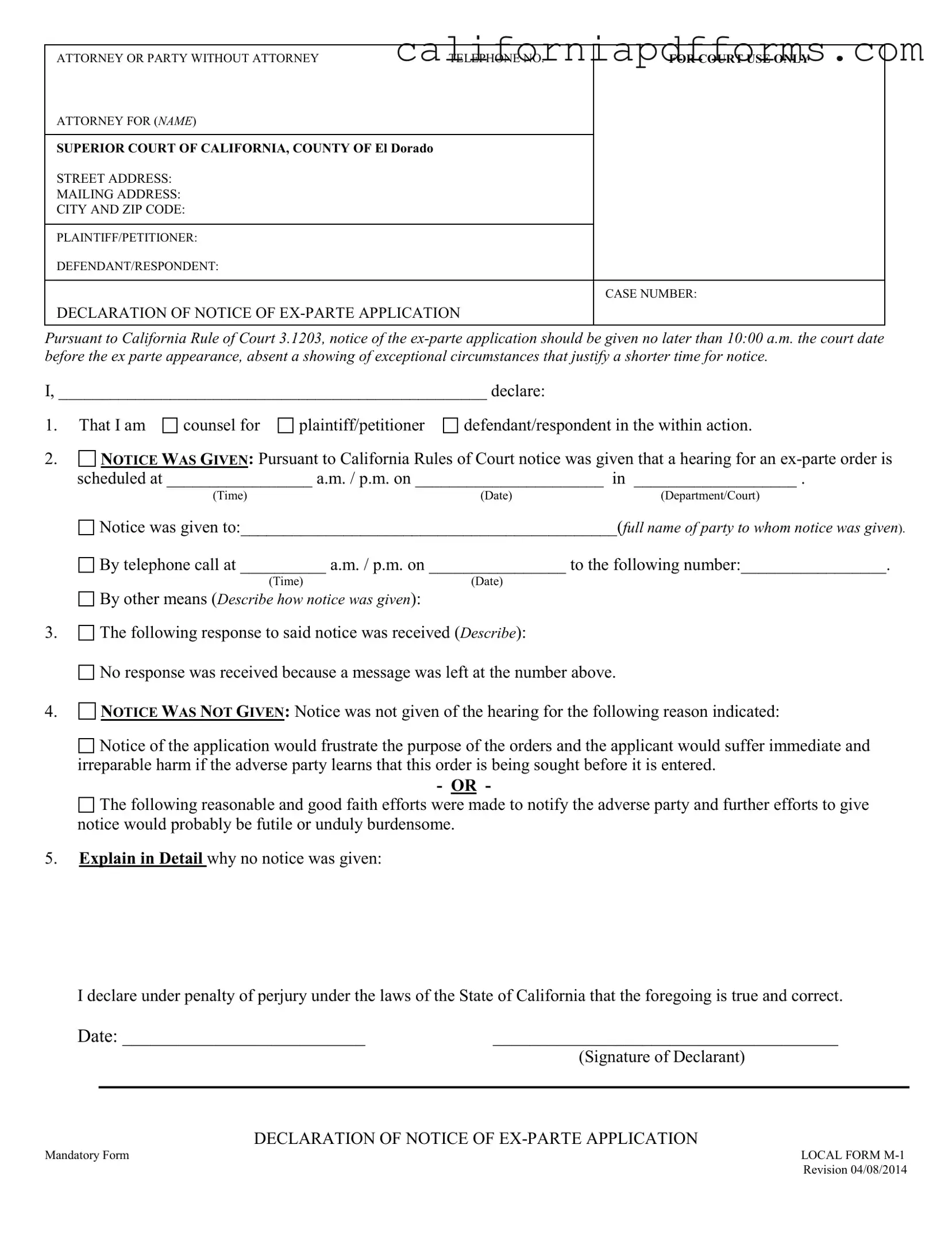The California Local M 1 form is a mandatory document used in the Superior Court of California, specifically for declaring notice of an ex-parte application. This form is essential for attorneys or parties without attorneys to notify relevant parties about a scheduled ex-parte hearing, ensuring compliance with California Rules of Court.
This form is typically used by attorneys representing either the plaintiff/petitioner or the defendant/respondent in a legal action. It is required whenever a party intends to request an ex-parte order, which is a request for immediate relief without the presence of the other party.
The Local M 1 form requires several pieces of information, including:
-
The name and contact information of the attorney or party filing the application.
-
The names of the plaintiff/petitioner and defendant/respondent.
-
The case number associated with the legal action.
-
Details about the notice given, including the time, date, and method of notification.
-
A declaration regarding whether notice was given or not, along with explanations if notice was not provided.
When should notice be given for an ex-parte application?
Notice of the ex-parte application must be given no later than 10:00 a.m. on the court date before the ex-parte appearance. However, if there are exceptional circumstances, a shorter notice period may be justified. It is crucial to adhere to this timeline to ensure the application is considered by the court.
What should be done if notice cannot be given?
If notice cannot be given, the form requires a detailed explanation of the circumstances. Common reasons include the potential for immediate and irreparable harm if the adverse party learns of the application beforehand. Alternatively, if previous attempts to notify the party were made and deemed futile, this should also be documented on the form.
Failure to complete the Local M 1 form accurately may result in delays or rejection of the ex-parte application. The court relies on this form to understand the notification process and the urgency of the request. It is advisable to review the form thoroughly before submission to ensure all required information is provided and accurate.
The Local M 1 form must be submitted in accordance with the court's requirements, typically in person or via electronic filing, depending on the court's procedures. Ensure to check with the specific Superior Court of California for any additional guidelines or requirements related to form submission.
